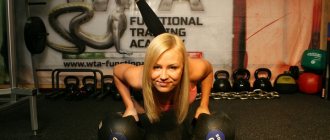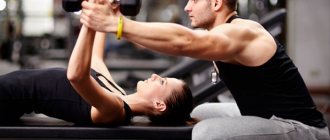A healthy lifestyle has long been in fashion: people try to eat right, play sports, and not have bad habits. All this requires enough time and effort. However, there are things that elude our eyes that actually have a very beneficial effect on the body.
We are talking about a contrast shower - one of the types of hardening. Everything seems quite simple - you alternately pour hot and cold water over your body, is there really any benefit from this? In this material you will learn everything about the contrast shower: a description of the procedure, indications and contraindications, beneficial properties, how to properly take a contrast shower, etc.
Description of the procedure
A contrast shower is a hygienic procedure, the essence of which is to pour cold and hot water over the body, for short periods of time, in turn.
By alternately influencing the body with water of different temperatures, you strengthen the vascular system, thereby improving blood circulation. Tissues and organs receive a signal, beginning to actively receive nutrients.
Improving immunity occurs due to the elimination of microorganisms: the body temperature is higher than the temperature of cool tap water, so the body reacts to droplets getting on the skin. The reaction occurs in the form of a rise in body temperature - the microbes present inside die. Health improves, immunity strengthens.
More details
The purported benefits of contrast hydrotherapy—both showers and baths—include the benefits of cold exposure. For example, a contrast shower can improve thermoregulation: the body adapts to temperature changes. Apparently, this is why regular cold showers make it easier to endure a cold: it does not strengthen the immune system and does not shorten the actual duration of the disease, but it helps to suffer less from fever symptoms and return to normal faster.
Some scientists also believe that cold increases stress resistance. By taking a cold shower, we create stress for the body, train it, and it better adapts to stressful situations: from lack of oxygen to everyday stress. During a contrast shower, we alternate between cold and hot water - which means the temperature difference is greater than just when taking a cold shower. Perhaps this causes the body to experience a stronger shock and adapt more quickly to temperature changes and stress.
But is there any special benefit from the contrast in temperature that simply cold does not provide? It is not known for sure: there is little scientific data specifically on contrast hydrotherapy. The body's reaction to such an impact still has a number of features. Cold causes the capillaries to constrict, blood to flow from superficial tissues and extremities to vital organs, and the heart rate increases. As the body heats up, the blood vessels dilate again, blood and oxygen are more actively supplied to the muscles and tissues, and the heart rate slows down. It turns out that a contrast shower works like a pump, causing the blood vessels to either expand or contract. Thanks to this, blood alternately flows from the skin and muscles and flows to them, and the heart either speeds up or slows down.
Judging by some experiments, this reaction of the body can increase blood flow and thereby improve motor function in people with a limp, as well as relieve swelling from sprains. But there are few participants in the studies. Sports medicine collected a little more data. It uses contrast hydrotherapy to speed up recovery after exercise. In studies of athletes, contrast showers reduced lactic acid levels after exercise, as well as reduced pain, muscle weakness and general fatigue. True, as a cure for pain and weakness, cold water turned out to be just as effective.
Moreover, the effect of contrast hydrotherapy on pain and fatigue is largely psychological. In one study, researchers did not observe any signs of increased physical recovery in elite athletes after contrast showers or baths. But they recorded that the subjects felt much more alert and rested. So contrast showers seem to still be beneficial for your mental state. But whether it provides other health benefits remains to be seen by science.
If you decide to try a contrast shower on yourself, first make sure you have no contraindications: open wounds, infectious diseases, hypertension and deep vein thrombosis. If you have chronic diseases, be sure to consult a therapist. Even if you are completely healthy, start the practice gradually to allow your body to adapt to temperature stress. For a couple of days, wipe yourself with a cold damp towel for several minutes. Then, step by step, accustom your body to a contrast shower: alternate cold and hot water once, gradually increasing the number of approaches.
How to take a contrast shower. Instructions
- Take a shower at your usual temperature for five minutes.
- Switch the water to cool or cold. But not icy: the minimum temperature in most studies is about 15 °C. So, pour cold water over yourself from your feet to your chest, avoiding the head area. Be prepared to feel like you are taking uncontrollable deep breaths. This is similar to the state after long sobs: the body reacts to stress.
- Pouring yourself with cold water costs 30–40 seconds. It can be longer, but this does not guarantee benefits. In a study that found the ability of cold showers to relieve colds, there was no difference between a 30-, 60-, or 90-second soak. To avoid timing errors due to cold stress, use an interval timer.
- Switch the water to hot (but not scalding). In studies, the temperature of the hot phase was 38–40 °C, so use these numbers as a guide. Stand under hot water for 30–40 seconds.
- Your sensations should be pleasant rather than painful and painful. If it is uncomfortable to maintain intervals in a 1:1 ratio, you can shorten the duration of the phase that is difficult to tolerate.
- Do 3-5 approaches, alternating exposure to cold and heat. At this point, the body will get used to cold and heat, and there will be a temptation to increase them. But don't give in: due to the fluctuations in sensation on the skin and its adaptation to this, you may not feel when the water starts to burn. By the way, for the same reason it is worth remembering what position the tap is in at each stage of the procedure, because you can get burned by accident.
- Complete the procedure with cool or cold water, then vigorously rub the body with a hard towel.
Beneficial properties of a contrast shower
As mentioned above, a simple procedure is fraught with many useful properties.
- The general condition of the body improves, the immune system is strengthened;
- Beneficial effects on the vascular system of the body, blood circulation improves;
- The number of colds decreases due to training in body thermoregulation;
- Blood pressure levels are normalized;
- Metabolism accelerates, due to which you can speed up weight loss;
- A contrast shower stimulates the functioning of brain cells, a person’s mood improves, he feels fresh and energized;
- Helps fight insomnia, depression and other psychological disorders;
- The skin becomes more elastic;
- In men, testosterone levels increase and potency improves;
- Increases stress resistance;
- Sweating decreases;
Contraindications to contrast shower
Contrast showers, like any procedure, have their contraindications. Before starting use, it is better to consult with a medical specialist who will tell you for which pathologies and chronic diseases a contrast shower is contraindicated. The doctor will also give the necessary recommendations for use.
Contraindications to contrast shower:
- Thrombophlebitis;
- Diseases of the cardiovascular system;
- Hypertonic disease;
- Increased body temperature (37 and above);
- ARVI diseases;
- Cuts, open wounds;
- The course of pregnancy with complications;
- Blood diseases;
- Sore throat, cystitis;
- Oncology;
- Chronic diseases;
You can start hardening with a contrast shower only after all the sores have been cured and you have consulted a doctor again, who will give permission.
Emphasis when dousing with cold water
It's easy to imagine warm or hot water pouring on you, relaxing you. It is much more difficult, but also MUCH more effective, to perform a similar technique under extremely icy water. Imagine how the tone of your body increases, and you literally begin to burst with energy.
If you have seen some people dousing themselves with cold water on the street, you have noticed that sometimes they scream. Especially men. Each of us, men, when performing such an action, especially on the street, especially in winter, feels at least like Tarzan. After you wet yourself, you want to punch your chest, break a block of ice, or perform a feat










